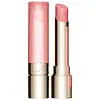What's inside
What's inside
 Key Ingredients
Key Ingredients

 Benefits
Benefits

 Concerns
Concerns

 Ingredients Side-by-side
Ingredients Side-by-side

Ricinus Communis Seed Oil
MaskingHydrogenated Vegetable Oil
EmollientButyrospermum Parkii Butter
Skin ConditioningBis-Diglyceryl Polyacyladipate-2
EmollientHelianthus Annuus Seed Wax
Skin ConditioningOctyldodecanol
EmollientPolyglyceryl-2 Triisostearate
EmulsifyingCorylus Avellana Seed Oil
EmollientRosa Moschata Seed Oil
EmollientSimmondsia Chinensis Seed Oil
EmollientTheobroma Cacao Seed Butter
EmollientEthylhexyl Palmitate
EmollientTocopherol
AntioxidantCI 77891
Cosmetic ColorantTocopheryl Acetate
AntioxidantDiethylhexyl Syringylidenemalonate
Skin ProtectingMacadamia Ternifolia Seed Oil
EmollientParfum
MaskingDicalcium Phosphate
AbrasiveTribehenin
EmollientHelianthus Annuus Seed Oil
EmollientCaprylic/Capric Triglyceride
MaskingCI 19140
Cosmetic ColorantSorbitan Isostearate
EmulsifyingCI 15850
Cosmetic ColorantLactic Acid
BufferingPalmitoyl Tripeptide-1
Skin ConditioningRicinus Communis Seed Oil, Hydrogenated Vegetable Oil, Butyrospermum Parkii Butter, Bis-Diglyceryl Polyacyladipate-2, Helianthus Annuus Seed Wax, Octyldodecanol, Polyglyceryl-2 Triisostearate, Corylus Avellana Seed Oil, Rosa Moschata Seed Oil, Simmondsia Chinensis Seed Oil, Theobroma Cacao Seed Butter, Ethylhexyl Palmitate, Tocopherol, CI 77891, Tocopheryl Acetate, Diethylhexyl Syringylidenemalonate, Macadamia Ternifolia Seed Oil, Parfum, Dicalcium Phosphate, Tribehenin, Helianthus Annuus Seed Oil, Caprylic/Capric Triglyceride, CI 19140, Sorbitan Isostearate, CI 15850, Lactic Acid, Palmitoyl Tripeptide-1
Dipentaerythrityl Hexahydroxystearate/Hexastearate/Hexarosinate
Skin ConditioningHydrogenated Polyisobutene
EmollientDiisostearyl Malate
EmollientEthylhexyl Palmitate
EmollientJojoba Esters
EmollientAcacia Decurrens Flower Wax
EmollientHelianthus Annuus Seed Wax
Skin ConditioningPolyglycerin-3
HumectantCeramide EOP
Skin ConditioningCeramide Ns
Skin ConditioningCeramide NP
Skin ConditioningCeramide As
Skin ConditioningCeramide AP
Skin ConditioningHydrogenated Lecithin
EmulsifyingGlyceryl Stearate
Emollient2,3-Butanediol
HumectantWater
Skin ConditioningButyrospermum Parkii Butter
Skin ConditioningKojic Dipalmitate
EmollientPalmitoyl Tripeptide-1
Skin ConditioningOryza Sativa Extract
AbsorbentPhenoxyethanol
PreservativeMaltodextrin
AbsorbentBHT
AntioxidantDipentaerythrityl Hexahydroxystearate/Hexastearate/Hexarosinate, Hydrogenated Polyisobutene, Diisostearyl Malate, Ethylhexyl Palmitate, Jojoba Esters, Acacia Decurrens Flower Wax, Helianthus Annuus Seed Wax, Polyglycerin-3, Ceramide EOP, Ceramide Ns, Ceramide NP, Ceramide As, Ceramide AP, Hydrogenated Lecithin, Glyceryl Stearate, 2,3-Butanediol, Water, Butyrospermum Parkii Butter, Kojic Dipalmitate, Palmitoyl Tripeptide-1, Oryza Sativa Extract, Phenoxyethanol, Maltodextrin, BHT
 Reviews
Reviews

Ingredients Explained
These ingredients are found in both products.
Ingredients higher up in an ingredient list are typically present in a larger amount.
This ingredient is also known as shea butter. It is an effective skin hydrator and emollient.
Emollients help soothe and soften your skin. It does this by creating a protective film on your skin. This barrier helps trap moisture and keeps your skin hydrated. Emollients may be effective at treating dry or itchy skin.
Shea butter is rich in antioxidants. Antioxidants help fight free-radicals, or molecules that may harm the body. It is also full of fatty acids including stearic acid and linoleic acid. These acids help replenish the skin and keep skin moisturized.
While Shea Butter has an SPF rating of about 3-4, it is not a sunscreen replacement.
Shea butter may not be fungal acne safe. We recommend speaking with a professional if you have any concerns.
Learn more about Butyrospermum Parkii ButterEthylhexyl Palmitate, also known as octyl palmitate, is created from 2-ethylhexyl alcohol and palmitic acid. It is a fatty acid ester.
The fatty acid content of Ethylhexyl Palmitate makes it an emollient. Emollients help soften and hydrate your skin by trapping moisture within.
Ethylhexyl Palmitate is also used to help improve the texture of cosmetics. It helps other ingredient dissolve in products and help disperse ingredients more evenly.
You'll likely find this ingredient in sunscreen, as it is often used to mix UV-blocking ingredients such as avobenzone and ethylhexyl triazone.
It can also help stabilize the fragrances in a product as a fragrance fixative.
Ethylhexyl Palmitate can be used to substitute mineral oil.
Due to its high fatty acid content, it may not be fungal-acne safe.
Learn more about Ethylhexyl PalmitateHelianthus Annuus Seed Wax is created from the common sunflower.
Sunflower seed wax is made up of long chain non-glyceride esters, a small amount of fatty alcohols, and fatty acids.
This ingredient is often used to enhance the texture of products. The fatty acid properties also help hydrate the skin.
Learn more about Helianthus Annuus Seed WaxPalmitoyl Tripeptide-1 is also known as pal-GHK. It is made up of 3 amino acids and palmitic acid, a fatty acid that helps it absorb into skin more easily.
This peptide is as a signal peptide, meaning it tells the skin to produce more collagen. Collagen is the key protein that helps form the skin's structure and keep it plump, firm, and hydrated.
By boosting collagen production, this ingredient supports a stronger skin barrier and helps reduce the appearance of wrinkles.
You'll most likely see this ingredient paired with Palmitoyl Tetrapeptide-7 in the well-known Matrixyl 3000 complex. While results from in-house testing should be viewed cautiously, this peptide duo is among the most studied and widely used in modern skincare.
Due to its palmitic acid base, this ingredient may not be safe for Malassezia folliculitis.
Read more about other common types of peptides here:
Learn more about Palmitoyl Tripeptide-1